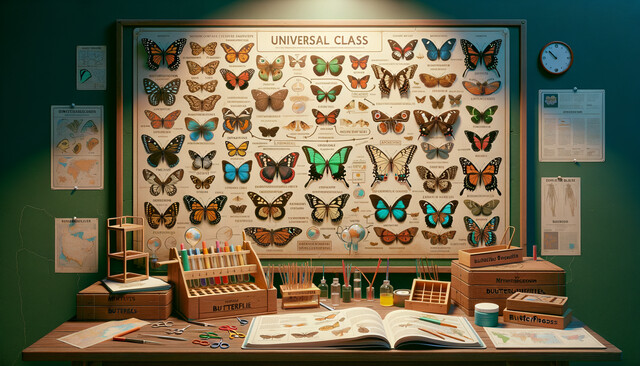Most serious collectors insure their antiques and collectibles against many different kinds of losses. They do so by properly insuring their treasured valuables with an insurance carrier.
Understanding Insurance
Most people, when asked after a loss if they have insurance, quickly reply, "I am covered." In reality, they have no idea if they are or not. They assume if they bought some form of insurance that they have coverage and the insurance company will pay any losses. Nothing could be further from the truth.
Insurance, in its simplest concept, is the transfer of risk from an individual to an insurance company. What this means, for example, is that if you own a $100,000 building and it were to be totally destroyed by a fire, the fire insurance policy, issued by the insurance company, would pay $100,000. The risk of losing the $100,000 building and owning nothing after a loss was transferred to the insurance company. This is the guiding principal of insurance, that if there is an insured loss, the owner will be compensated by receiving a payment from the insurance company.
This principal applies to insuring antiques and collectibles. By purchasing insurance, the owner of the collectible items is transferring the risk of loss to an insurance company. Should fire, theft, accidental breakage, vandalism, or some other loss occur, the owner receives payment from the insurance company.
Not all losses are insurable. The damage or loss must have occurred suddenly and accidentally. An item destroyed by deterioration, such as an old, dry, rotted wooden antique that just falls apart, is not likely to be a covered loss.
Insuring Your Collection
A devastating fire could reduce your collection to nothing more than smoldering ashes. This risk is avoided easily if you properly insure your property.
Most collectors assume their collection is automatically covered under their homeowner's insurance policy. Many times, their collections are not covered, or inadequately insured. It should also be noted that homeowner's insurance coverage varies among the states. Each state's insurance commissioner establishes rules and regulations as to how property insurance provides protection within that state.
An insurance policy includes an insuring agreement, in which the company describes what is being insured and the maximum amount to be paid in case of a total loss. All policies include exclusions, whereby specific items are not covered. Insurance policies also include limitations of coverage, such as the maximum amount the insurer would pay. For example, cash is often limited in coverage. An insurer may only pay a maximum of $100 if cash is stolen or destroyed in a fire.
As you think about insuring your antiques and collectibles, some of the questions you will likely include:
1. What happens if something unusual happens to your collection?
2. What happens if a natural disaster strikes; will your insurance cover the loss of a collection?
3. What about damage caused by clumsiness?
4. Will your current insurance cover accidental breakage of a single piece or two?
The best guidance for those that own or collect anything that is unusual, of extraordinary value, or special interest is to discuss your coverage with your insurance agent. Make sure you understand what is and is not covered under your policy. Understand also what your duties and obligations are under the policy as the insured person.
When speaking with your homeowner's insurance agent, you are likely to find out that a special rider can be added at nominal costs that will properly insure your items. In some instances, a separate insurance policy can be written to cover the collection. Depending on the type of collection, you may need to seek insurance from an insurance company that deals specifically with collectors.
When speaking with your insurance agent, be sure to ask about the following:
1. policy limits or terms;
2. deductibles;
3. accidental breakage;
4. mysterious disappearances;
5. how the value of an object is determined if there is a loss;
6. what is not covered.
Keep in mind that not all losses are covered. For example, in many locales, flood coverage is not included as part of the insuring agreement of a homeowner's policy. If your antiques or collectibles were damaged or destroyed by a flood, you would have no coverage and the insurance company would have no liability to pay for your loss. To be covered for flood losses, you would typically need to purchase flood insurance.
Separate Policy with Homeowners Insurance Company
Another insurance option is a policy purchased from an insurance agency that specializes in antiques and collectibles. These specialized policies cover your collections. The collections can be of anything, from stamps, coins, pottery, antique furniture, jewelry, or vintage motorcycles.
Two well-known companies that insure collections are:
1. American Collectors Insurance;
2. Collectibles Insurance Services, LLC.
There are differences between the companies, so be sure to ask about rates, how claims on breakage or theft of multi-piece or paired items are handled, and deductibles.
Specialized insurance often offers something called "Agreed Value" coverage. This provision allows both you and the insurer to agree when the policy is written as to the value of an object. This is the amount the company pays in the case of a total loss of the object.
Other Considerations
Maintain an inventory with pictures of the collection. Make sure valuable items are properly inventoried. Pay particular attention to items with a value of more than $1,000.
Keep in mind that it is always up to the insured (you) to present and prove your claim. Good recordkeeping is vital. The value of photographs that depict your collection goes a long way to prove the authenticity of your claim.
Keep a copy your records and photographs in a second, secure location. This could be in a safe deposit box or a friend's or relative's home. The goal is to have access to your important records in case of a loss. Think of the worse possible disaster, such as a fire that levels your property. Be prepared to present your claim by being able to produce copies of your photos and records. With your inventory records, keep a copy of your insurance policy.
If your collection includes "pairs," always determine what the coverage is before a loss. For example, you might collect cookie jars. Find out how a claim would be processed if the lid was broken. Each company has different ways of handling pairs. Some even provide specific "Pairs and Packaging Coverage.'
When working with antiques and collectibles, there is nothing more important than knowledge. The more you know, the more you are likely to enjoy your collection and increase your profits. Knowledge will help you in all facets of your collecting, from the acquisition to the sale of items. Simply stated, you cannot know too much about the objects that you choose to collect.
Most avid collectors tend to specialize or find a special niche that interests them and then grow their collections. There are thousands and thousands of niches. Some are common, and others are not. Some of the better-known niches include:
1. agriculture;
2. autographs;
3. automotive;
4. coins;
5. furniture;
6. glassware;
7. movie/motion picture;
8. phonographs/records;
9. postcards;
10. printed materials, such as newspapers or magazines;
11. sports memorabilia;
12. stamps;
13. textiles;
14. tools;
15. watches.
There are many more. Often, collectors specialize in one particular area of a general category. For example, a collector may be interested in automotive collectibles. The collector may specialize in collecting oilcans. Another may prefer to collect gas pumps, while yet another collects hubcaps. One automotive collector acquires and sells only taillights. The collections can grow in any direction and include whatever interests the collector.
Building Your Knowledge
Learning more about the history of the objects you own makes a collection even more interesting. Most collectors thrive on a thirst for knowledge about those items in their collection, as well as those things they hope to add to the collection when located.
You need to start somewhere. The most common place to begin gaining knowledge is at the library. Most libraries maintain a section of books about antiques and collecting. From price guides to the history of items, the library is a good place to begin building your knowledge. Many libraries also offer magazines and newspapers published for collectors and enthusiasts of antiques.
Most likely, your first collection is based on something you already know. One avid collector got started "by accident." He was working in a shop painting cars. He hurt his back and could not do the work anymore. He started going to yard sales and flea markets and buying tools to sell on eBay.
He specialized in buying and selling tools because he used tools in his business and was familiar with them. He knew what tools cost new and had experience using them. He started by buying items he thought he could make a profit on.
Before long, there were opportunities to purchase older tools from an earlier era. He started buying and collecting these older items. His collection grew.
In some cases, he paid too much for items and lost a few dollars. In other transactions, he did well. He studied at the library, reading collectors' magazines and studying books on antique tools. Regardless of whether he made a profit on the items or not, he learned. He also added to his growing knowledge base. Today, he is a highly successful collector of antique tools. He learned which items are rare. He knows what collectors want and what they are willing to pay for an item. When he sees an old tool, he knows if he can buy it to sell it for a profit.
He started slowly, spending just a few dollars for each item. The former body shop worker did not mortgage his home to buy a large collection of items. He started by buying some $5 and $10 items that he guessed were worth more. Today, he is an antique tool expert. He studied. He learned. He did the work necessary to become an expert. In a world where today we think nothing of spending $4 for a cup of coffee, he bought his knowledge by taking a risk, studying, and spending a few dollars on some inexpensive items.
Another collector got started by buying abandoned items in storage lockers. The contents of storage lockers are auctioned when the renters do not pay. Using $200, he started purchasing the contents of a storage shed for as little as $20. Then he sold everything he found in the shed, and rolled the money over. Sometimes he got lucky and found something expensive. He learned a lot as he sorted through the lockers. He began to focus on memorabilia of interest to baby boomers. He found old games and toys and became a knowledgeable expert at what was rare and wanted. He amassed a huge collection of board games. He now specializes in the ones that were based on television shows.
Browse through price guides and read them. Do not spend a lot of time on the prices, as they are not always correct. As you study them, look rather for the ranges of values. After a short time, you will start to see patterns. By looking through price guides, and then comparing the items in the guides to items in antique stores, you build associations in your mind.
Looking at the prices in stores, shops, or antique malls is not a good way to learn values. You need to handle the items and see what they sell for. Prices are not always a good indicator of value. The only way to learn about antiques and collectibles is to handle them. Become familiar with them.
There is a difference between learning firsthand and reading information on a computer screen. You should do both to expand your knowledge.



























